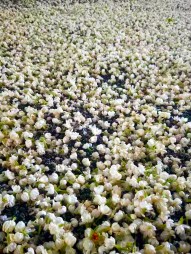When it comes to fresh produce, there’s no season more abundant than late summer. If you spent your spring planting and weeding, you may find your home garden filled to bursting, while local farmer’s markets are more bountiful than ever.
With such a wonderful recent harvest, we’ve been having fun experimenting here at Dominion Tea, pairing up some of our favorite teas with dishes made from seasonal produce. Yes, pairing – just like wine, tea’s widely diverse range of flavors and complexity means that a proper match with food can lead to beautiful complementary tastes. But just like wine, the art of pairing food with tea is a delicate balance, combining flavors without overwhelming any one component.
Curious to give it a try? Here are some of our favorite combinations for the late summer season.
Overwhelmed with cucumbers and tomatoes? Nothing beats a classic Greek Salad with feta, oregano, and olive oil. Try pairing it with our Red Alishan Oolong to enhance its sweet and earthy flavors. Remember that balance is important when it comes to tea and foods, so go light on the vinegar and onions if you use them.
If you have squash or zucchini and you’re feeling adventurous, break out your spiralizer for a veggie-forward take on classic carbonara. Not only do vegetable noodles offer a healthy (and keto-friendly) alternative to traditional pastas, these garden mainstays pair delightfully with woody, malty Chinese black teas like Yunnan Sunrise or Keemun Mao Feng.
For herb lovers, put fresh-plucked oregano and basil to use in a simple herb dressing, an easy and versatile fridge staple that can be applied to fish, chicken, salads, and so much more. Try with a cup of our White Monkey to augment its bracing freshness.
Sweet and rich summer corn is delicious no matter how you prepare it, whether it’s seared on the grill or fried up with elote spices for a fun summer side dish. Pair with classic Chinese green tea like Huang Shan Mao Feng to enhance its creamy sweetness.
And for dessert, there are few things better than a warm fruit cobbler, especially when it’s made with fresh and juicy summer peaches and plums. Serve with a cup of 2nd Flush Darjeeling to bring out the tea’s naturally rich and fruity muscatel finish. Enjoy!
By: Jen Coate













